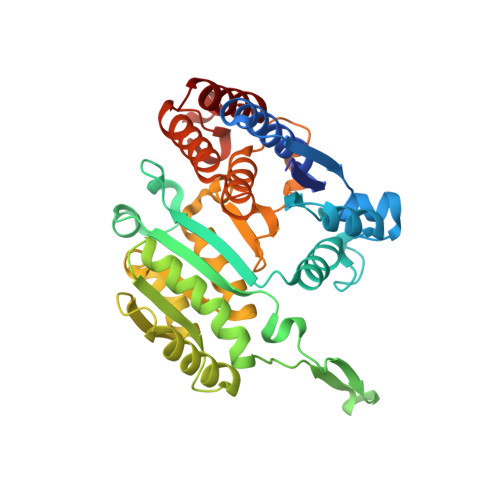High-pressure-induced water penetration into 3-isopropylmalate dehydrogenase
Nagae, T., Kawamura, T., Chavas, L.M.G., Niwa, K., Hasegawa, M., Kato, C., Watanabe, N.(2012) Acta Crystallogr D Biol Crystallogr 68: 300-309
- PubMed: 22349232
- DOI: https://doi.org/10.1107/S0907444912001862
- Primary Citation of Related Structures:
3VKZ, 3VL2, 3VL3, 3VL4, 3VL6, 3VL7 - PubMed Abstract:
Hydrostatic pressure induces structural changes in proteins, including denaturation, the mechanism of which has been attributed to water penetration into the protein interior. In this study, structures of 3-isopropylmalate dehydrogenase (IPMDH) from Shewanella oneidensis MR-1 were determined at about 2 Å resolution under pressures ranging from 0.1 to 650 MPa using a diamond anvil cell (DAC). Although most of the protein cavities are monotonically compressed as the pressure increases, the volume of one particular cavity at the dimer interface increases at pressures over 340 MPa. In parallel with this volume increase, water penetration into the cavity could be observed at pressures over 410 MPa. In addition, the generation of a new cleft on the molecular surface accompanied by water penetration could also be observed at pressures over 580 MPa. These water-penetration phenomena are considered to be initial steps in the pressure-denaturation process of IPMDH.
- Department of Biotechnology, Graduate School of Engineering, Nagoya University, Japan.
Organizational Affiliation:



















